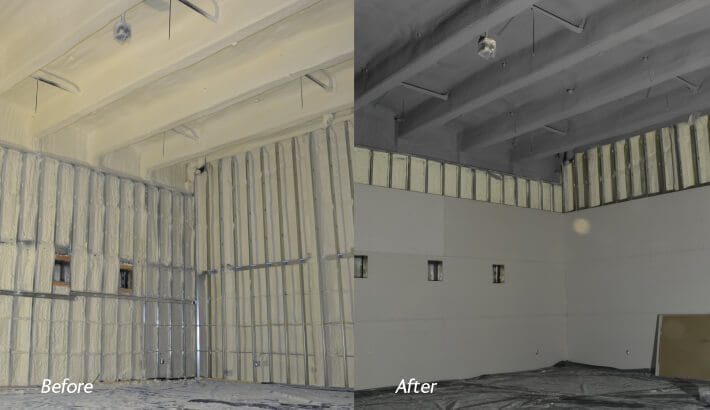- Roofing
- Decking
- Waterproofing
- Sprayfoam
- Documents
- Resources
- Training

SITUATION:
Pacific Science Center in Seattle, WA began as the United States Science Pavilion during the 1962 Seattle World’s Fair. After the fair concluded, the Science Pavilion was given new life as the private not-for-profit Pacific Science Center. It was the first U.S. museum founded as a hands-on science and technology center, and on July 22, 2010 was declared a City of Seattle Landmark. Pacific Science Center includes five buildings in which visitors will find a variety of exhibits, theater, events and entertainment. A 20,000 square foot building typically used for traveling exhibits was experiencing ongoing heating and cooling issues. Visitors to exhibits were enduring cold temperatures and drafts during the winter, and in summer months the buildings HVAC could not sufficiently cool the air.
Pacific Science Center was beginning a sustainability initiative designed to achieve energy efficiency and LEED Certification. They wanted the best possible insulation solution, and contacted Gaco Western for advice regarding re-insulating the building to meet strict code requirements and to achieve points towards their LEED Certification. Gaco’s local Area Manager and a local contractor, Premiere Spray Foam, visited the facility and provided a specification that would meet the needs of the Pacific Science Center.
SOLUTION:
Gaco and Premiere Spray Foam agreed the most cost-effective solution was to install Gaco183M Closed Cell Spray Foam Insulation over the existing insulation and wall structure; the foam insulation would then be covered by new framing and drywall to provide a fresh new interior.
With just 3” of spray foam insulation in the walls and 4” in the 35’ high ceiling, Pacific Science Center achieved a Class II vapor retarder as well as an air barrier, and ninety percent operating efficiency – this means significantly lower energy costs for heating and cooling the building.
UNIQUE CHARACTERISTICS:
The interior walls of the building included many visible wires and pipes, and many of the wall surfaces included indentations and odd angles. In order to install the spray foam insulation at the required depth, the applicator had to be meticulous as he worked his way throughout the building. To complicate matters a bit more, the new metal stud framing was completed PRIOR TO the installation of the spray foam, so the foam had to be installed BEHIND the framing. The ceiling was intended to be left exposed, which meant the spray foam insulation had to be installed so that once it was coated, it would look nice and smooth. And, all the existing lighting, HVAC vents, and exhibit support wires had to be protected from the spray foam, yet the foam had to be installed in such a way that it provided a complete air seal within the building.
INSTALLATION DETAILS:
Gaco 183M Closed Cell Spray Foam Insulation was applied at a depth of 3” in the walls and 4” in the 35’ high ceiling to achieve the specified R-value of R-25. Per building code requirements, the foam in the ceiling was coated with 20 wet mils of IFTI Paint to Protect DC315 to provide the required thermal barrier between the foam and the interior of the building. The end result? A well-insulated and air-sealed building, with significantly increased energy efficiency and savings – and increased visitor comfort!
| Location: | Seattle, WA |
| Specification: | Gaco 183M |
| Product Type: | Polyurethane Spray Foam Insulation |
| Contractor: | Premiere Spray Foam |
| Problem Solved: | Cold temperatures and drafts during the winter, and inefficient air conditioning in the summer. |
| Customer: | Pacific Science Center |